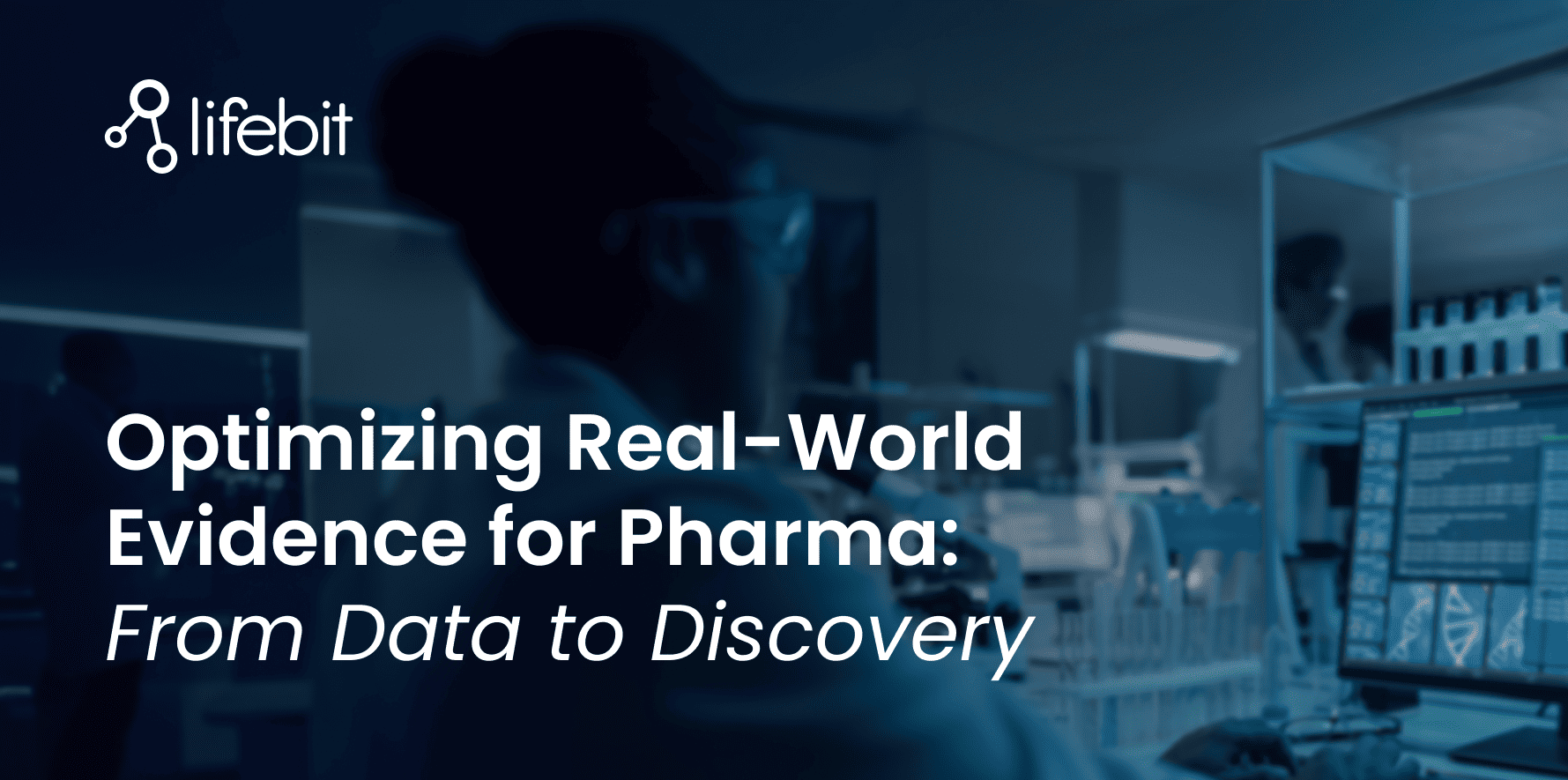

First Steps to a Healthier Future: Newborn Genomic Sequencing in the Detection of Disease
Hannah Gaimster, PhD
.png?width=868&height=191&name=Download%20button_2%20(2).png)
Worldwide, health screening is a key factor in providing targeted and effective population-level health care.
Screening tests allow medical conditions, such as sickle cell disease and cystic fibrosis, to be identified as early as possible, ideally before symptoms onset. This then allows appropriate interventions and treatments to be given to ultimately improve patient outcomes.
In particular, screening newborn babies for rare genetic disorders in the first few days of life is one of the twentieth century’s most effective public health initiatives, as cited by the United States Centers for Disease Control and Prevention.

How are newborns screened for genetic disease typically?
Traditionally, this is done by a ‘heel-prick’ test, where a few drops of the newborn’s blood are collected from their foot and sent for biochemical laboratory analysis.
The blood is analysed using tandem mass spectrometry (MS/MS), a biochemical test analysing metabolites of interest, which allows fast, simultaneous detection of multiple genetic diseases. Currently, in the UK, this approach allows detection of nine rare but serious conditions. The exact number of conditions screened for using this traditional blood spot biochemical test varies from county to country, for example, Greece screens for up to 30 diseases currently using this approach.
In Australia, newborn screening is performed at the state level - so the number of conditions screened for depends on the specific state/territory, with a maximum of 28 conditions being assessed. In the USA, the number of diseases tested for can also vary between states, with a core panel of 35 diseases being recommended for testing.

How are genomics approaches advancing newborn screening?
In some countries, newborn screening initiatives are beginning to take the first steps towards utilising large-scale genomics data (eg an individual’s whole genome) to diagnose an increasing number of disorders, including rare and genetic conditions.
Genomics is the study of a person’s complete set of DNA and has relevance to all medical specialities across all life stages. Increasingly, advances in our understanding of the genome are contributing to improvements in disease diagnosis, drug discovery and targeted therapeutics. Routine genomic sequencing of newborns can be considered the ultimate application of precision medicine and is a logical extension of more traditional screening of newborns for genetic diseases.
Several newborn genomic sequencing initiatives in the USA are already underway, including the Rady Children’s Institute’s BeginNGS initiative and the Boston Children’s Hospital and Brigham and Women’s Hospital BabySeq Project.
In Australia, the Murdoch Children’s Research Institute’s landmark Generation Victoria (GenV) initiative is currently trialling a new genomic newborn screening model on 1,000 babies to lay the foundation for a national-scale programme.
In Europe, Greece has begun a clinical trial as a partnership between PlumCare RWE and BeginNGS Greece, with Lifebit providing the trusted research environment for data analysis. Here, researchers will assess the outcomes of performing genomic newborn screening in an initial cohort of 1,000 newborns, with the aim of scaling to all newborns nationally by 2027.
In the UK, Genomics England’s Newborn Genomes Programme is currently co-designing and running a National Health Service (NHS) embedded research study to explore the benefits, challenges, and practicalities of sequencing and analysing the genomes of newborns to detect disease.
%20(1).png?width=868&height=579&name=First_Steps%20(2)%20(1).png)
Dr Maria Chatzou Dunford, CEO of Lifebit, introducing the pioneering Greek Genome Project, to screen newborn babies for rare genetic conditions.
What advantages can adopting a genomic newborn screening programme bring?
Genomic screening has several significant advantages compared to traditional biochemical screening approaches for genetic conditions in newborns.
These are:
-
01More conditions can be screened for and detected.
-
Compared to traditional newborn screening, which typically detect between 10-30 conditions, genomic screening vastly increase the diseases that can be tested for (approximately 400 on average) For example, in the Greek pilot study, approximately 400 actionable genetic conditions affecting newborns will be screened for, representing a 13 fold increase in the number of conditions screened for. Importantly, these are diseases for which treatments or treatment candidates in clinical trials currently exist.
-
02Newborn genomic screening is performed before symptom onset, and early interventions can lead to better outcomes.
-
Extensive clinical evidence has shown that screening for genetic diseases can save lives, and genomic screening provides opportunities to make diagnoses as fast as possible and to bring targeted therapeutics or gene-based therapies to the patient in the quickest possible time frame.
- 03Genomic screening requires a single test.
-
Genomic newborn screening can significantly shorten the diagnostic odyssey many families affected by undiagnosed complex diseases can face. In some cases, this will be the difference between a single sample taken for genomic screening versus potentially multiple different invasive diagnostic tests.
- 04Genomic sequencing test results can be rapidly assessed.
With optimised workflows, clinical interpretation tools and the right workforce genomic screening results can be obtained in as little as five days.
- 05Genomic approaches can provide better value for money overall.
-
Studies have shown that genomic newborn screening can lead to a net reduction in the cost of care due to reduced hospital stays and reduced iterative rounds of testing.

What challenges surround genomic newborn screening, and how are they being addressed?
While there are significant advantages to moving towards a genomic approach to newborn screening, these programmes also have challenges. These are summarised in the following table, alongside some ways that these issues are being addressed.
- Parents/guardians are concerned about their newborn’s genomic data security and privacy.
-
This issue can be partially tackled by storing genomic data securely in trusted research environments (TREs). TREs allow approved researchers from authorised organisations a safe way to access, store, and analyse sensitive data remotely. Federated databases,which facilitate secure data access from multiple sources without the need for data movement- where data could be vulnerable to interception, have also emerged as a promising solution for safely sharing anonymised genomic data.
- Rare genetic conditions are, by definition, uncommon within the general population, therefore, to maximise and validate insights from the data, researchers need access to multiple rare disease cohorts, often in different places.
-
Federated technology can advance these efforts and securely connect genomic data across distributed sites. An example is the MatchMaker Exchange (MME) tool. MME provides researchers with a systematic approach to discovering rare disease-causing genes by developing a federated network of connected databases. This allows them to search across previously siloed databases, and securely access data about the potential genetic underpinnings of undiagnosed rare diseases.
- With genomic sequencing initiatives comes a huge amount of data in various formats. This can lead to difficulties in storage and analysis of the data.
-
It is key that genomic data is standardised to ensure interoperability. This is especially important when data has come from disparate sources; data must be harmonised before the datasets can be combined and used in further analysis. ETL (Extraction, Transfer, Loading) pipelines can automatically standardise the ingested data to a common format.
- Considerations of the ethical, legal, and social implications (ELSI) of newborn genomic screening - these can include concerns surrounding sensitive data sharing and patient autonomy.
-
ELSI research questions should be fully integrated into initial studies to help researchers fully understand the potential impact of screening for a new condition on newborns and families, and contribute to key policy decisions. Here, The role of genetic counsellors is important in helping support affected families understand diagnoses. Initiatives should also involve patients and the public in a meaningful and effective way to ensure the methodology and research is focused on public benefit. The advantages of this are two-fold: firstly by explaining the benefits of genomic screening and secondly, mitigating the potential negative medical or social implications of screening whilst hearing parents’ concerns.
- High costs associated with genome sequencing.
-
Genomic screening is more expensive than some routine diagnostic screens; however, the potential benefits of the approach massively outweigh those compared to routine diagnostics. Furthermore, ELSI research questions making it an increasingly viable option for population-level screening programmes.
- Considerations of which diseases to target.
-
There are existing criteria for deciding which diseases to include in national newborn screening initiatives. Experts in ethics, law, clinical genetics should continue to be consulted on this matter and this is a topic for ongoing debate. However, to ensure this decision is made robustly and transparently, Genomics England, as an example, has used a public consultation as part of this process.
- A major challenge for integrating genomics into newborn screening will be the robust clinical interpretation of genetic variants.
-
Computational tools can help here, for example, machine-learning techniques to integrate such annotations into pathogenicity scores. Another example is Seqr, a web-based tool that enables different filters to be applied to genomic sequencing data in seq to aid variant calling and disease diagnosis. These types of computational tools are guided by a set of guidelines produced by the American College of Medical Genetics and Genomics (ACMG) , developed to aid the interpretation of disease-causing sequence variants.
- Lack of population diversity of cohorts means limited applicability to the full population
-
Carefully managed and meaningful patient and public involvement and engagement (PPIE) should be done to ensure hard-to-reach groups are not excluded from screening efforts. If newborn genomic screening is universally available, for free, then it should, in theory, help increase diversity and minimise disparities in healthcare. Beyond PPIE, substantial funding is also required to support these efforts. This was highlighted recently by the World Health organisation which has stressed the need to expand access to genomic sequencing and the associated technologies world wide to low- and middle-income countries (LMICs).
Genomic newborn sequencing is a promising approach with many advantages, but the integration into clinical care comes with complex technical, ethical, infrastructure and policy challenges, which must be meaningfully explored to ensure effective and equitable impact.
Newborn genomic screening allows early detection of genetic diseases, so appropriate early interventions can be given, allowing affected families to lead lives unaffected by disease. Improved care at a lower cost can ultimately be realised, provided technological advances and appropriate consideration of ELSI and subsequent PPIE and genetic counselling are leveraged.
These should be the first steps to ensuring that next-generation sequencing translates to next-generation care for newborns, ensuring healthier futures for all.
Featured news and events

2025-03-26 11:17:46

2025-03-14 15:45:18

2025-03-05 12:49:53

2025-02-27 10:00:00

2025-02-19 13:30:24

2025-01-30 12:47:38

.png)